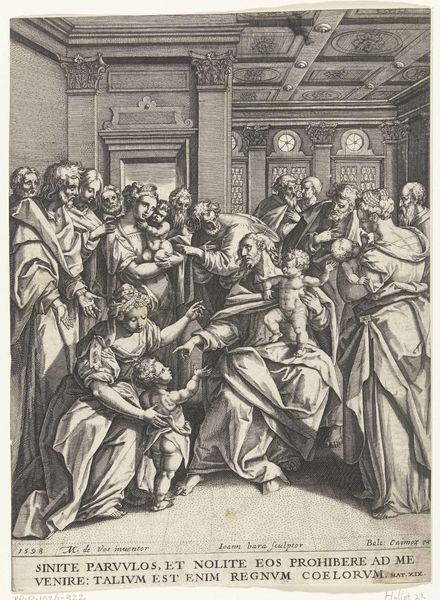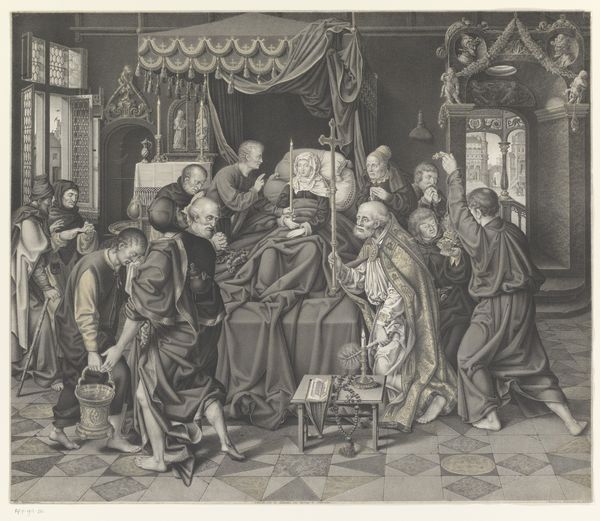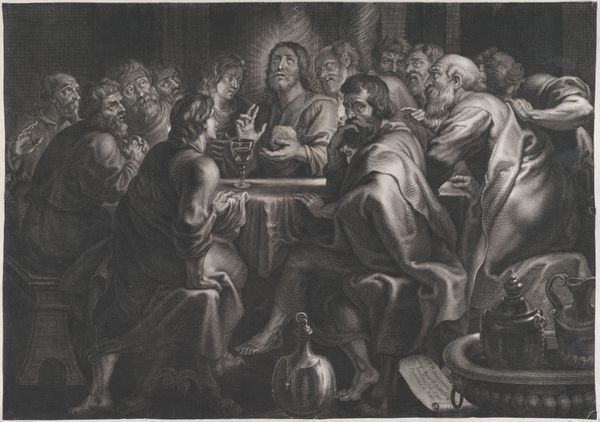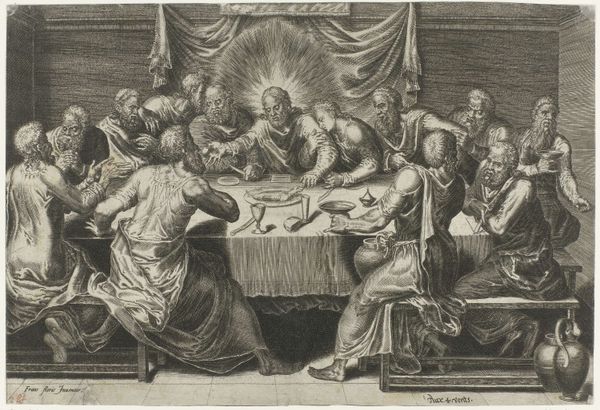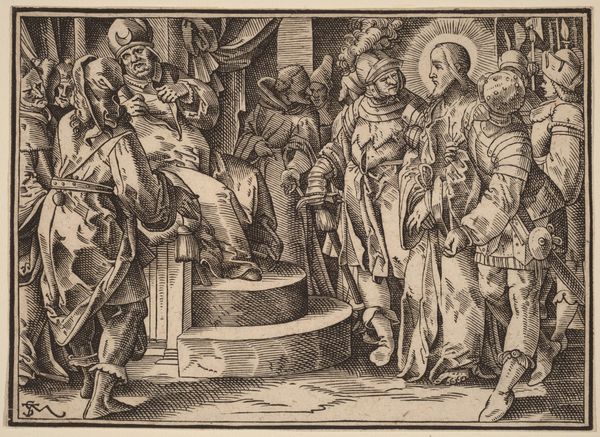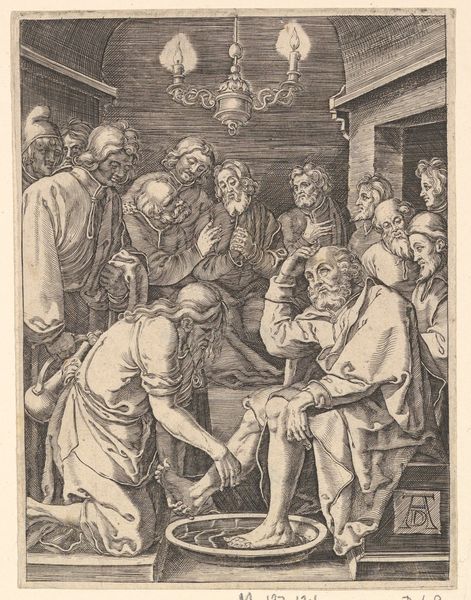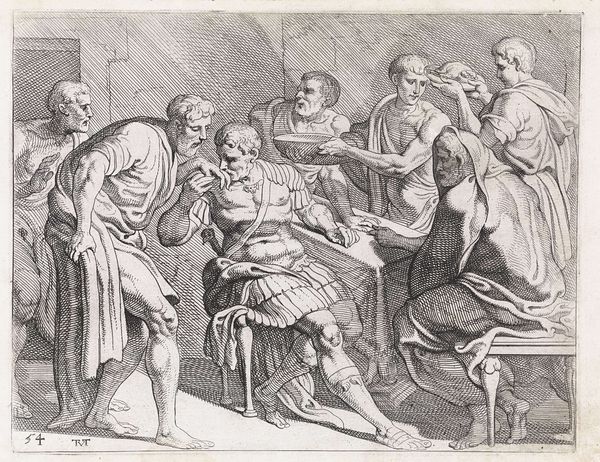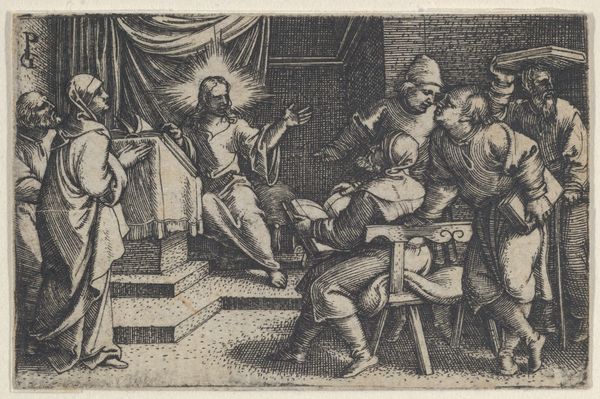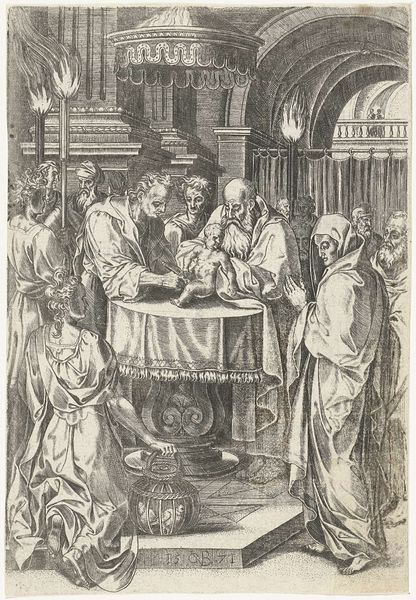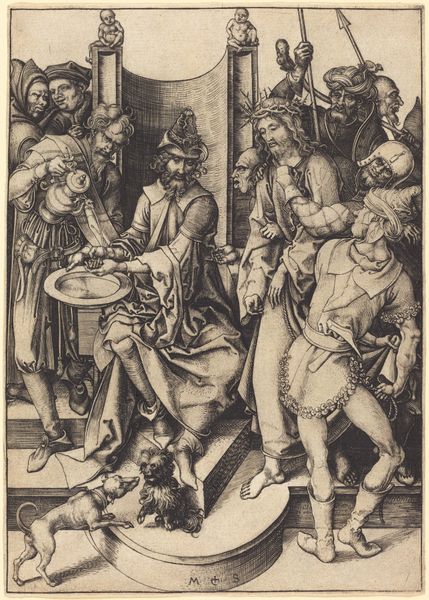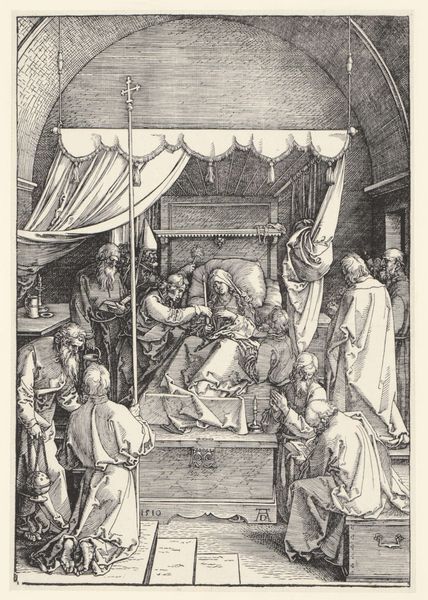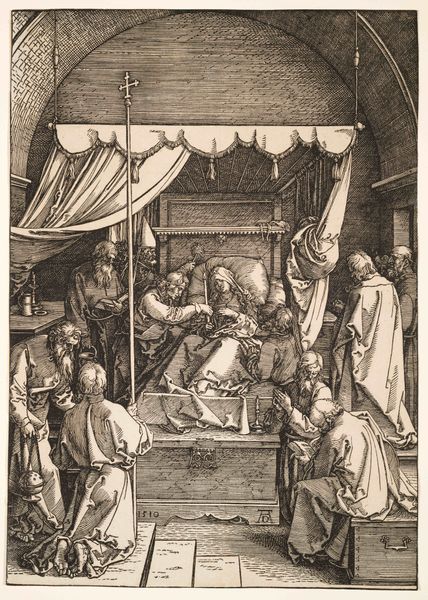
Willem III, Count of Holland, Ordering the Beheadal of the Bailiff of Zuid Holland, 1336 1620 - 1649
0:00
0:00
painting, oil-paint
#
baroque
#
painting
#
oil-paint
#
figuration
#
oil painting
#
genre-painting
#
history-painting
Dimensions: height 135 cm, width 195 cm, depth 7 cm
Copyright: Rijks Museum: Open Domain
Editor: This is "Willem III, Count of Holland, Ordering the Beheadal of the Bailiff of Zuid Holland, 1336" painted between 1620 and 1649 by Simon Henrixz, rendered in oil on canvas. It's… certainly a dramatic scene! So many figures, all focused on this impending execution. What are your thoughts on this piece? Curator: It’s fascinating to consider the painting's creation within the context of 17th-century Dutch society. Oil paint itself, and the skilled labor required to produce this narrative, highlight the emerging merchant class who could commission such works. What does the careful depiction of clothing and material objects suggest to you about the intended audience? Editor: That's a great point, I hadn't thought about the viewers at the time. The fabrics look so opulent, almost theatrical. Were they trying to send a specific message with that display? Curator: Precisely. Consider the labor involved in producing such fine garments. It represents wealth, power, and the control over resources – all essential aspects of maintaining social order. And what about the act of beheading itself? How does the painting frame this judicial act in terms of power dynamics and the social contract? Editor: Well, it's clear who holds the power! Willem III is literally calling the shots, the swordsman brandishes his weapon. The subdued figures watching seem to represent different factions maybe? Each individual in a different garment... Curator: Indeed. It’s a visual statement about hierarchy, control, and the consequences of challenging the established order. Think about the cost of the materials needed for the art itself, it serves as a way to remind us about production chains in society. The oil paint itself and even the brushstrokes showcase what Simon Henrixz had access to. What is the role of the anonymous crowd watching from the background? Editor: They seem to be representative of general society back then! Seeing them highlights how the message impacted them as much. Now, thinking about oil paint, what were its qualities in delivering that impactful message? Curator: A good question! The way that oil captures fine detail emphasizes texture and color which gives importance to everything included in this depiction, and elevates that material importance further. Thanks, I appreciate you considering all that! Editor: That's a great materialist point of view, it shed new light on the social context back then.
Comments
No comments
Be the first to comment and join the conversation on the ultimate creative platform.
